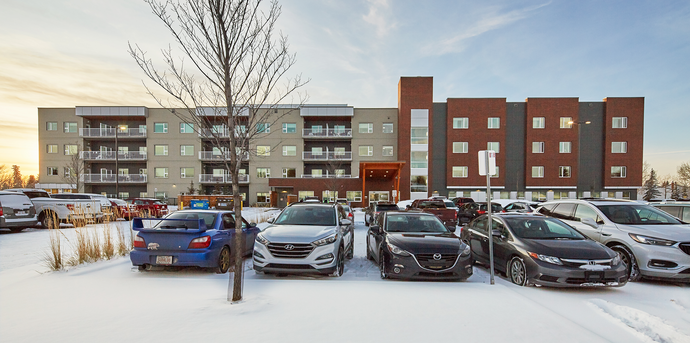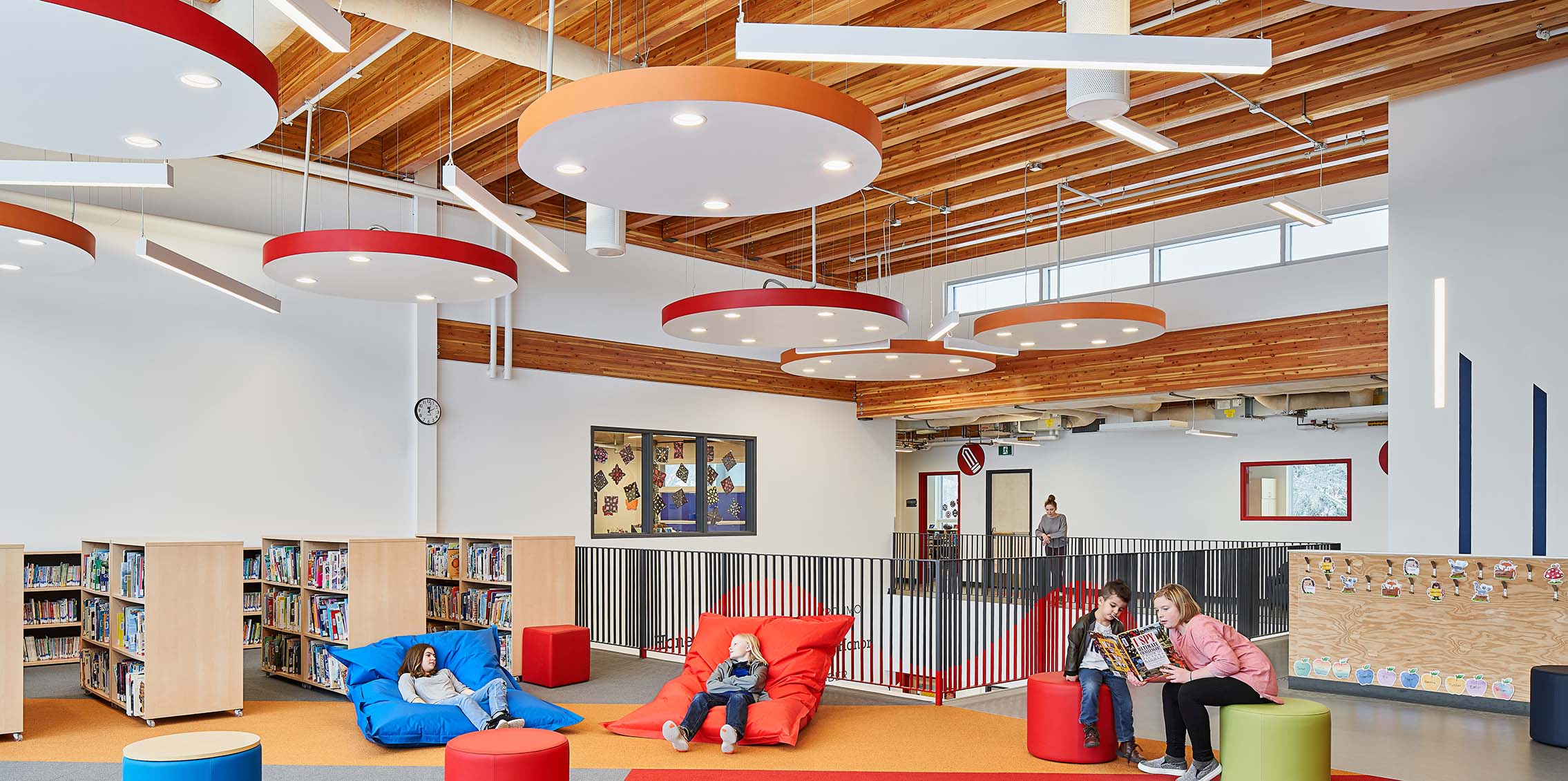The Challenge.
Both developments are the product of successful collaboration through Integrated Project Delivery (IPD). Read more about why this delivery method was the ideal approach to both projects in our latest case study. These two buildings are the product of successful collaboration through Integrated Project Delivery (IPD). As we enter the beginning of a new decade, we’ve come to expect a certain level of collaboration in project delivery methods. Despite this expectation, a focus on working together is often not the ultimate goal of traditional contracts. But what if collaboration was irrefutably built into the contract structure? Sakaw Terrace is the most recent seniors housing complex completed by GEF Seniors Housing—a-not-for-profit operating numerous seniors residences across Alberta. This experienced owner began with the intent to leverage previous experience completing such projects, utilize the knowledge of end-users and building operators, and empower trades during the design stage. Mill Creek School—a K-6 Spanish bilingual school—is the first twenty-first-century learning approach facility completed by the Edmonton Public School Board. The board sought enhanced collaboration between project team members to successfully implement innovative learning spaces and utilize heavy timber construction. Additionally, the project team was tasked with meeting long-term, highefficiency energy targets (such as LEED® Silver certification). In both cases, these forward-thinking owners chose the emerging Integrated Project Delivery (IPD) method in order to unlock higher levels of collaboration between project team members. Creating a system of goal-sharing for both project teams, the IPD method encourages everyone—from the owner, architect, and technical consultants, to the general contractor and subcontractors—to engage with each team member at each phase of the project. Team members are empowered with the ability to bring efficiencies to the table, which ultimately benefits the entire team. As the mechanical design consultant on both the Sakaw Terrace and Mill Creek School IPD project teams,
Smith + Andersen witnessed the impact of this approach.


The Solution.
During the design of Sakaw Terrace, there were several sessions where the foreman on-site would sit in the IPD “Big Room” with a mechanical designer and provide input as the designer was modelling piping or laying out the mechanical room. This allowed the individual completing the actual installation to provide useful, real-time input on the constructability of the design. Likewise, the collaborative nature of IPD allowed the Mill Creek School team to realize material and installation cost savings at critical points in the construction process. One such critical point was the required revision of the roof structure while implementation was already in full swing. The Smith + Andersen mechanical team leveraged our own experience with this type of redesign, along with the experiences of other team members, to flag opportunities to save money. These savings ultimately offset the costs of the mechanical and electrical systems required to suit the proposed ceiling reconfiguration. The owner could have the newly-proposed roof, without raising project costs. Introducing collaboration directly into the financial structure of the IPD delivery method demonstrated that if team members are empowered, the entire project team works together to achieve project objectives in an efficient, timely, and cost-sensitive manner.
The Result.
Even though their project objectives differ—goals, market sector, project team make-up—the benefits of the IPD delivery method were apparent on both Sakaw Terrace and Mill Creek School. The IPD delivery method allotted the Sakaw Terrace project team the flexibility required to meet the owner’s objectives. The owner utilized previous knowledge of completing this type of building to provide input from maintenance staff, which in turn was incorporated into the design. Empowered by improved levels of communication, our mechanical designers truly worked side-by-side with contractors and the owner, combining our own experiences on this project type with those of the owner and the rest of the team to design systems which ultimately led to cost-savings. The IPD project team for Mill Creek School balanced designs for innovative spaces and long-term sustainability targets within a strict budget set by the public school board. The team collaborated early on to develop system concepts and budgets that would result in reduced energy costs for the entire life cycle of the building, while maintaining the option for additional features, such as photovoltaic panelled-facades. Additionally, as a heavy timber building, Mill Creek School’s enhanced collaboration led to a smoother construction phase, which ultimately benefited the unique design requirements. Careful coordination with the architectural and structural consultants was required in order to create appropriately-sized openings in the exposed wooden beams for mechanical services to pass through. IPD created a culture of collaboration between team members, resolving issues and clashes quickly and smoothly, and fully embracing the architectural opportunities afforded by heavy timber. The end result was a twenty-first-century school where students feel like they’re not just learning in a great space, but are actively part of the school’s sustainability effort. In-the-moment feedback from the owner’s involvement prior to construction, along with the IPD project team working towards the same goal, resulted in highly-effective solutions for Sakaw Terrace and Mill Creek School that not only achieved project objectives, but also improved operations for building staff.

